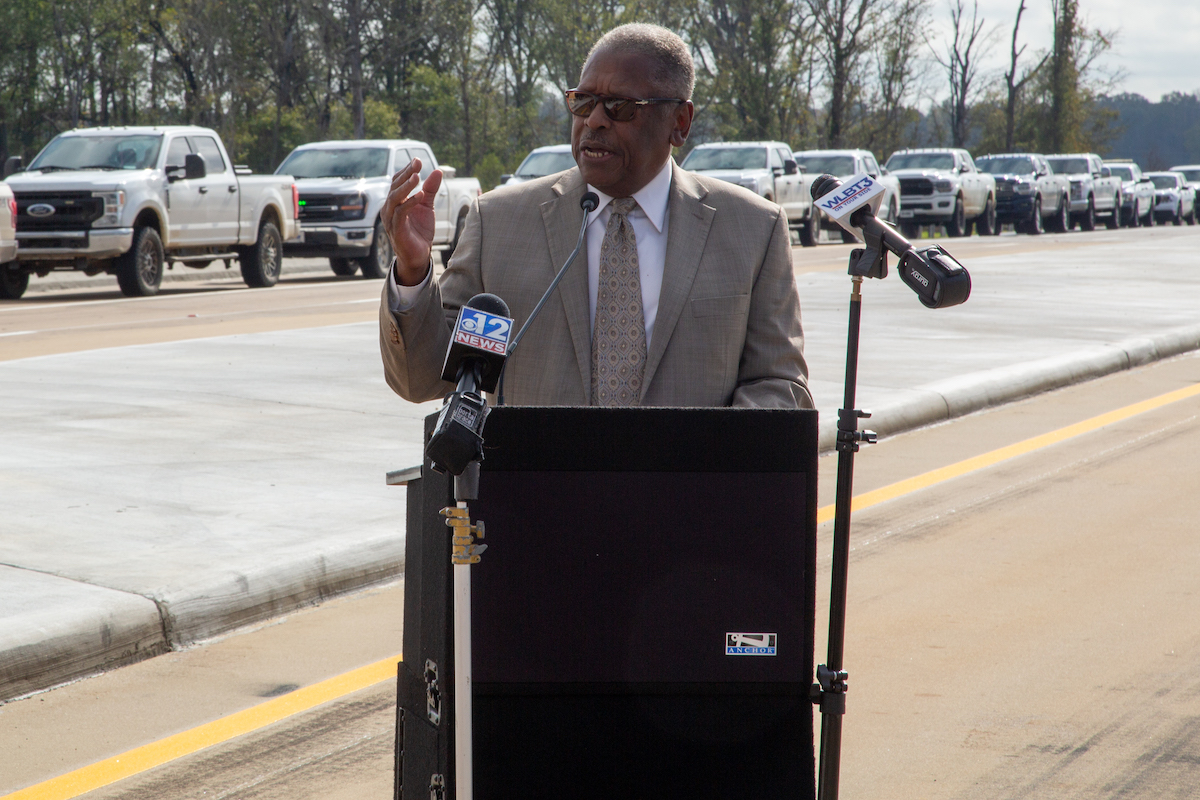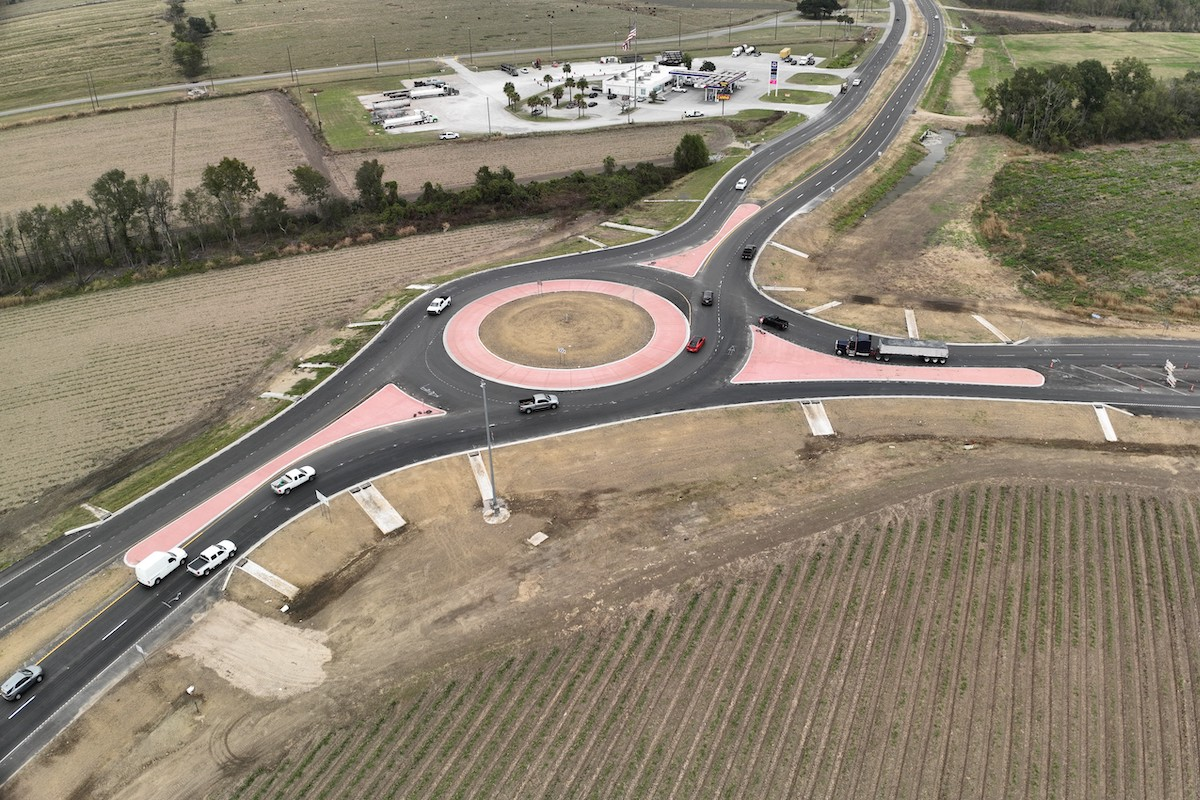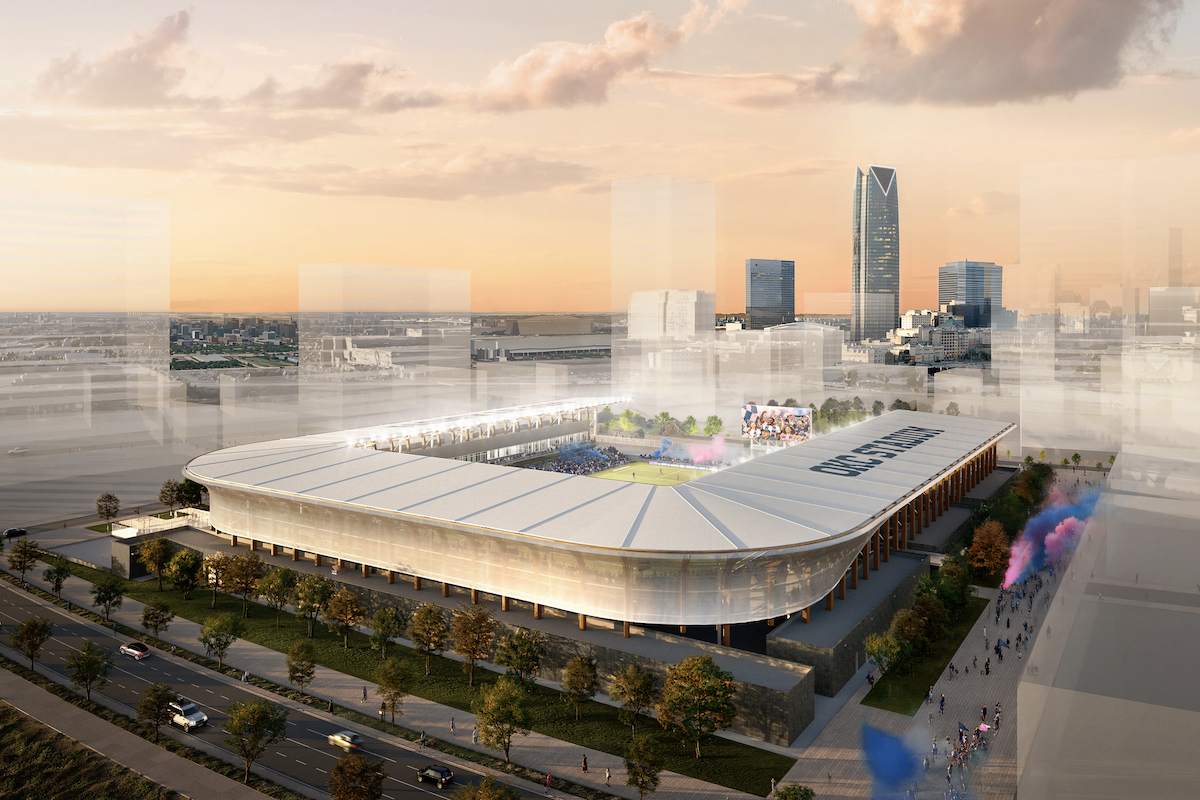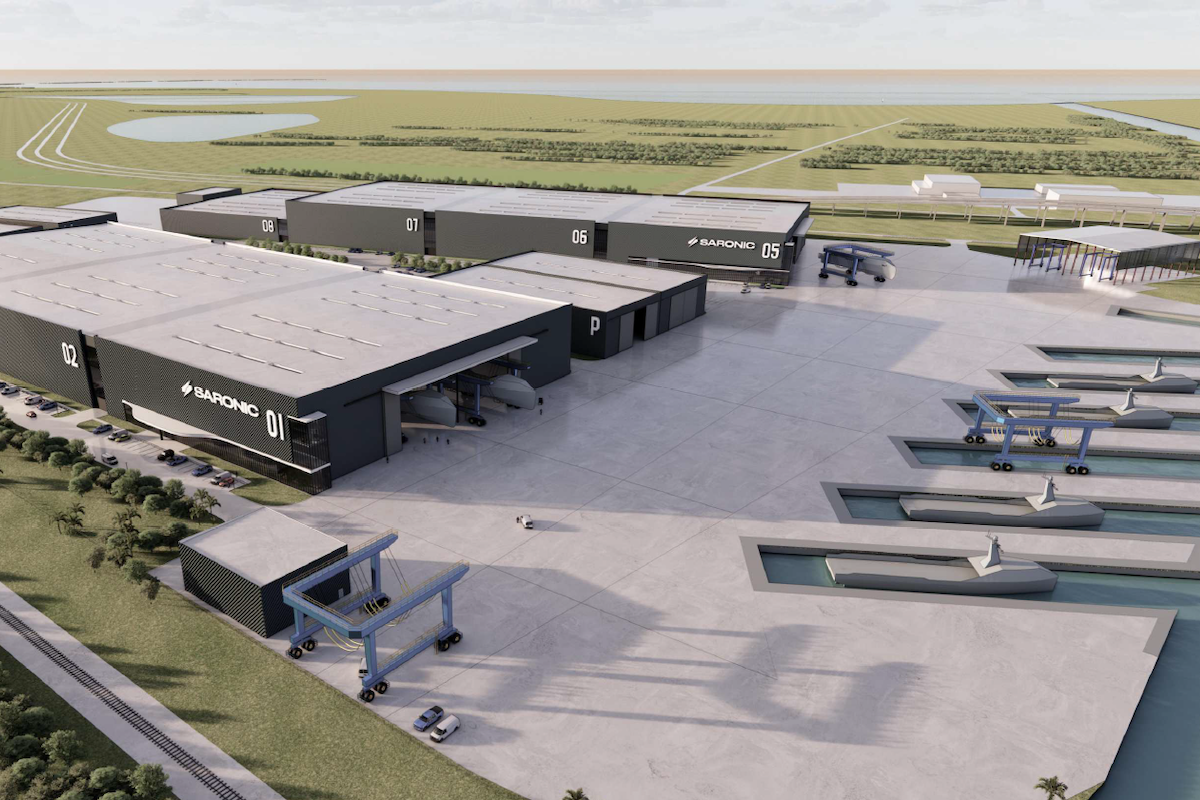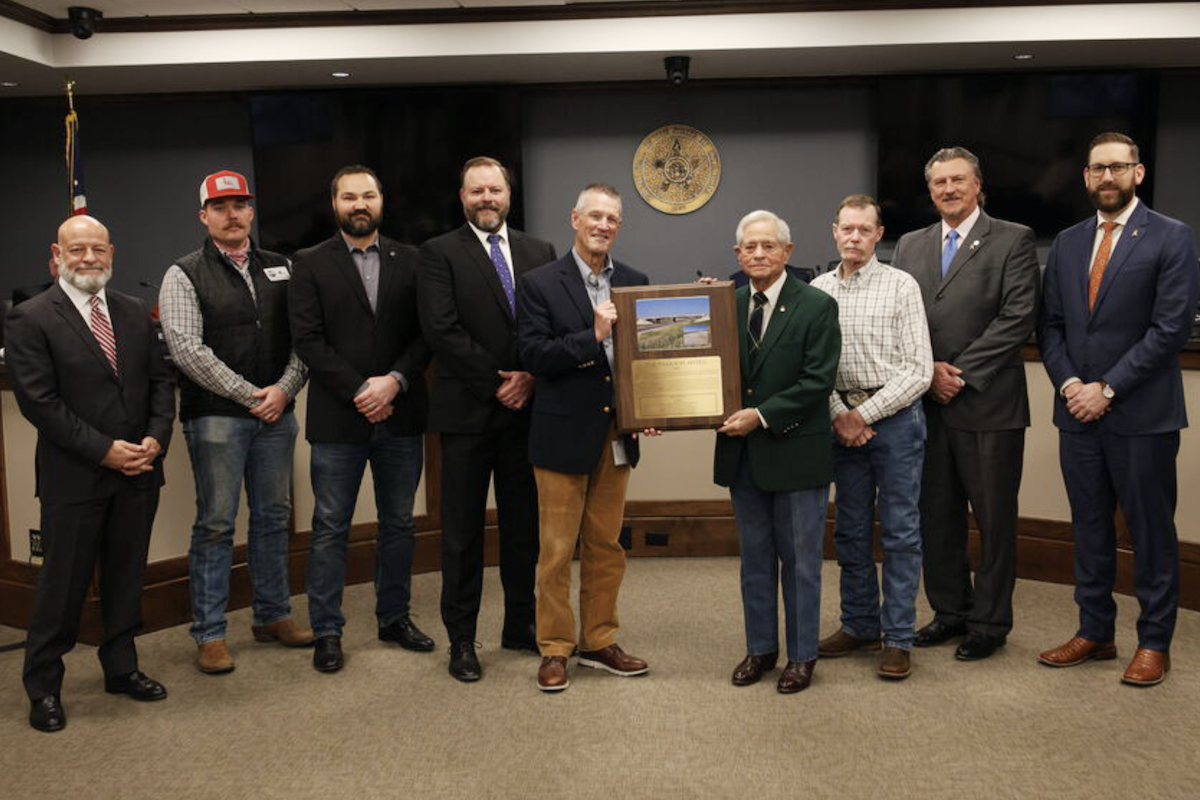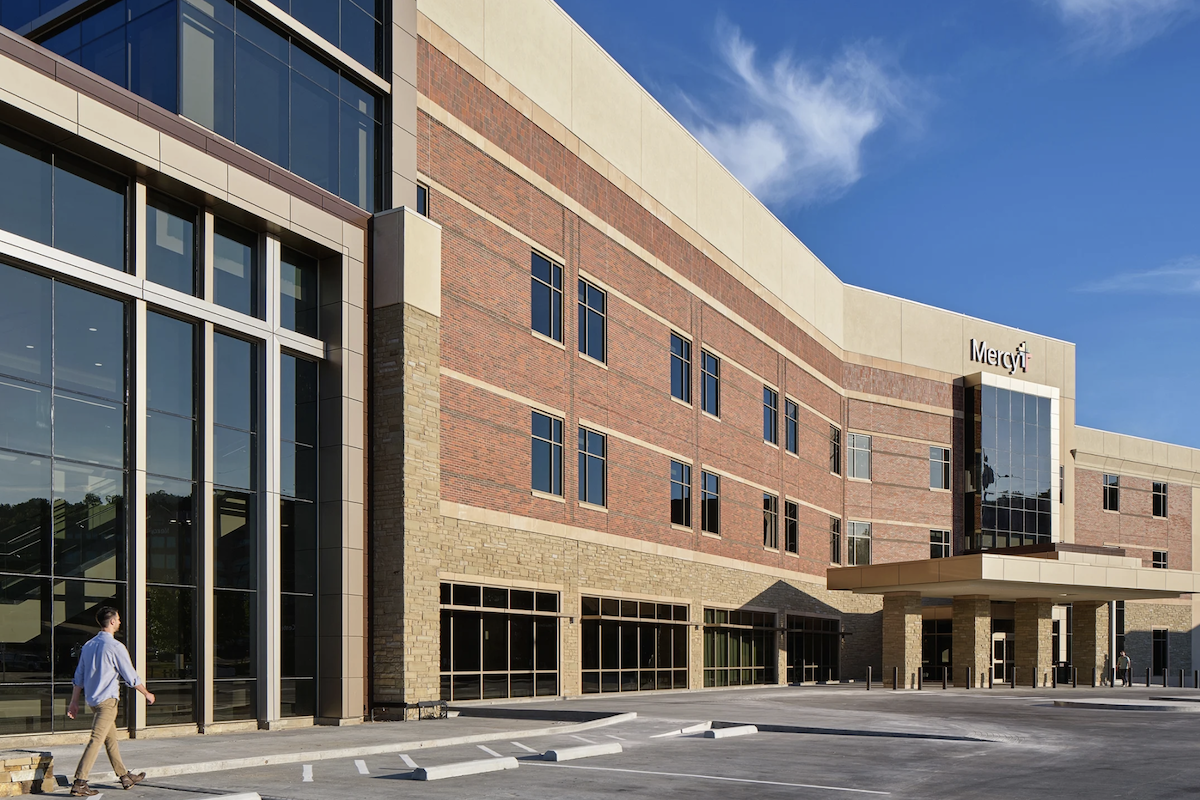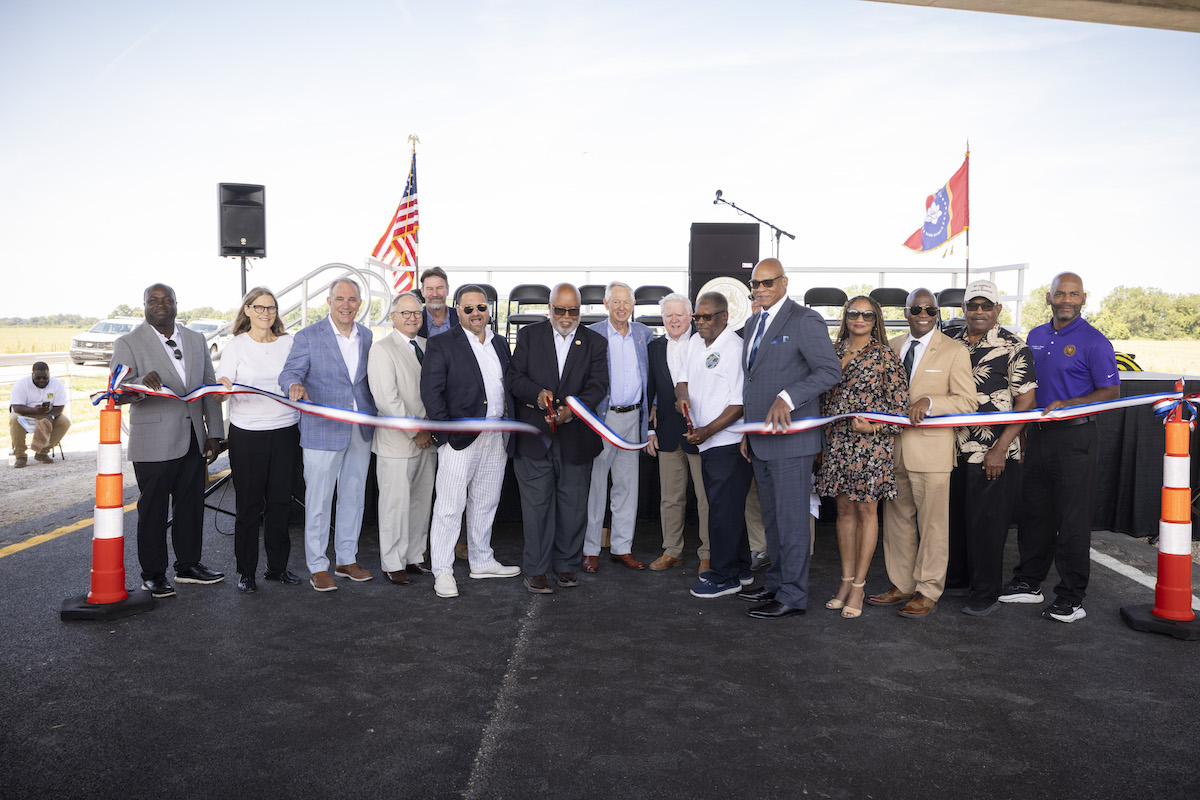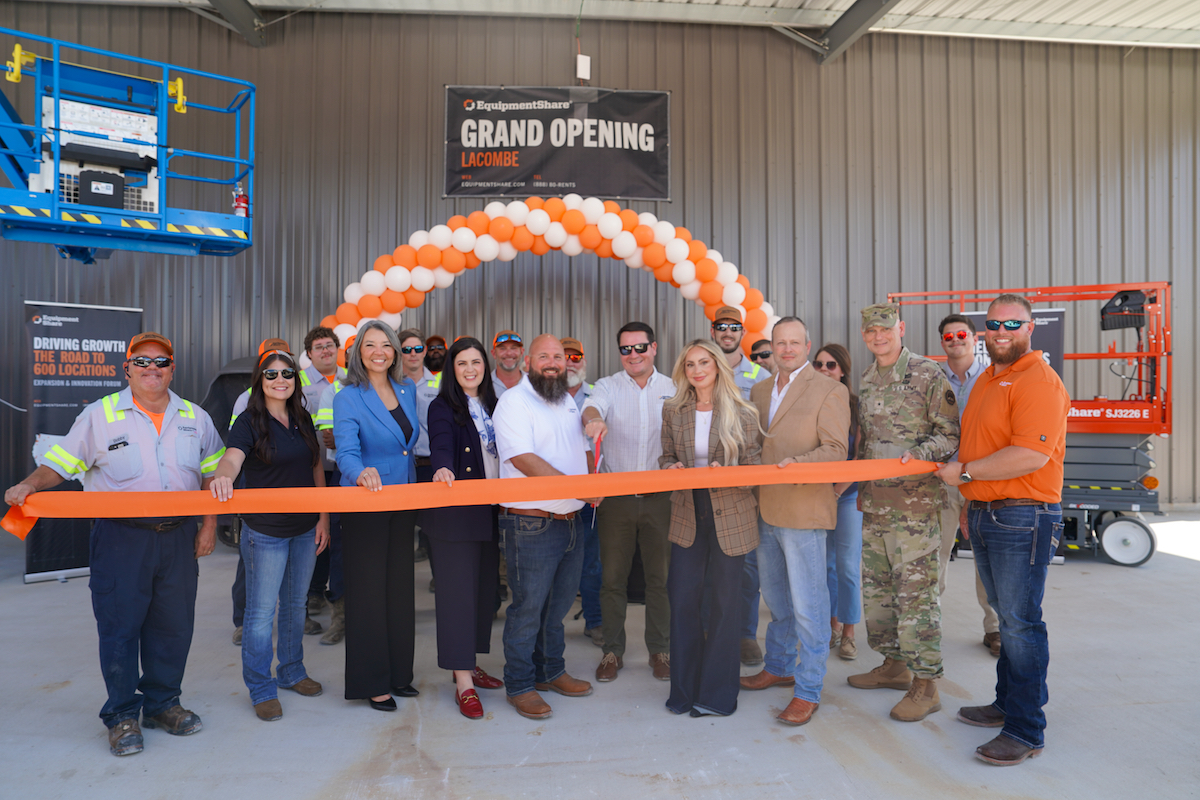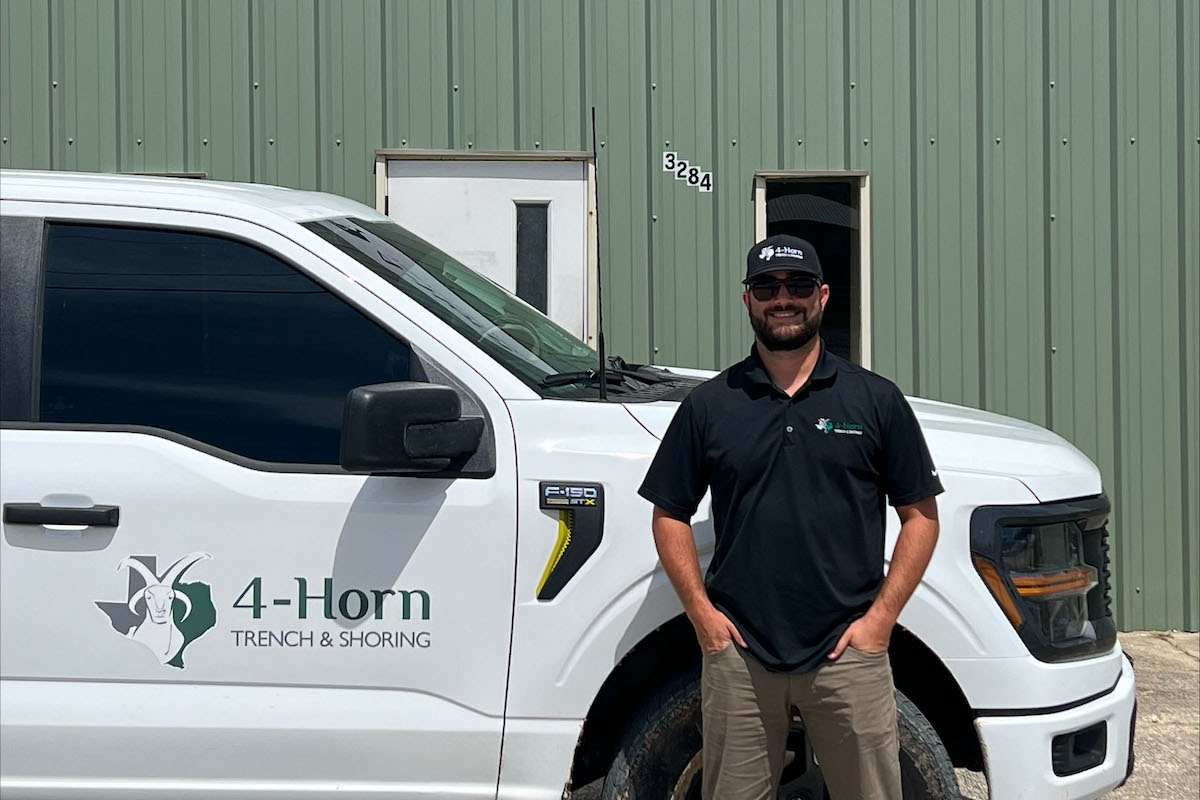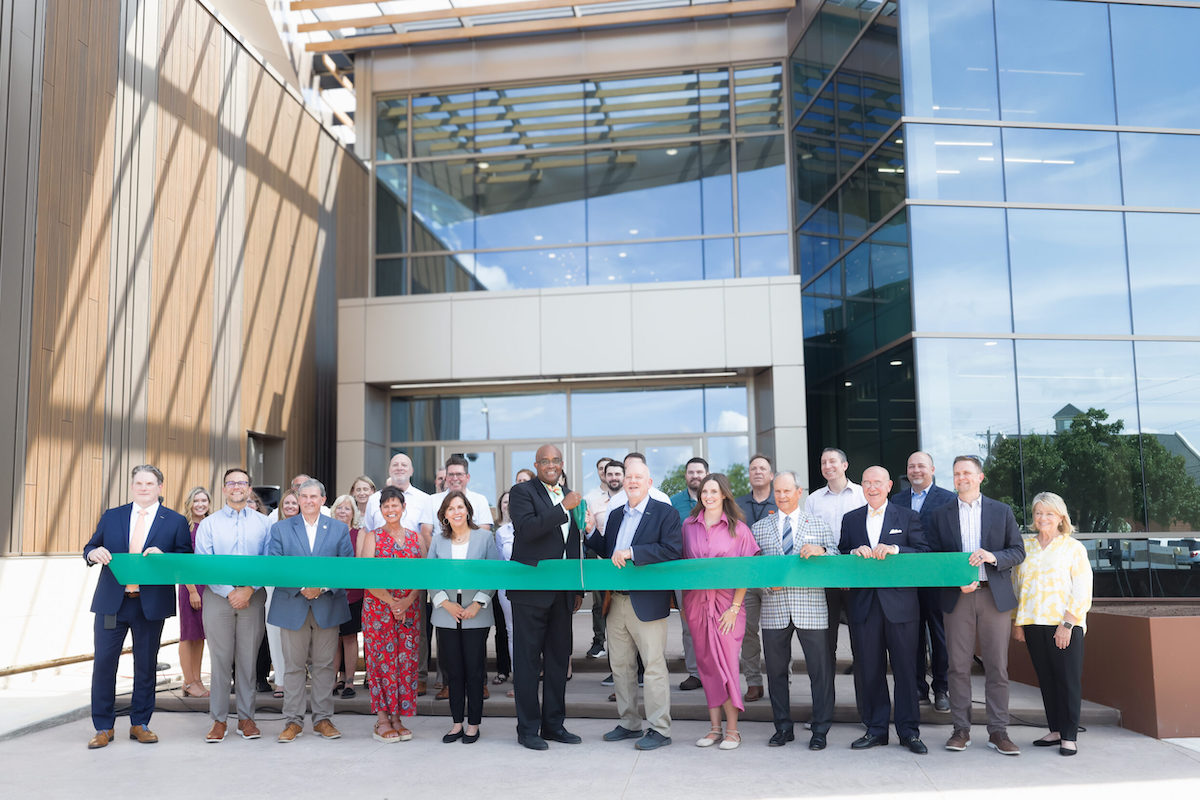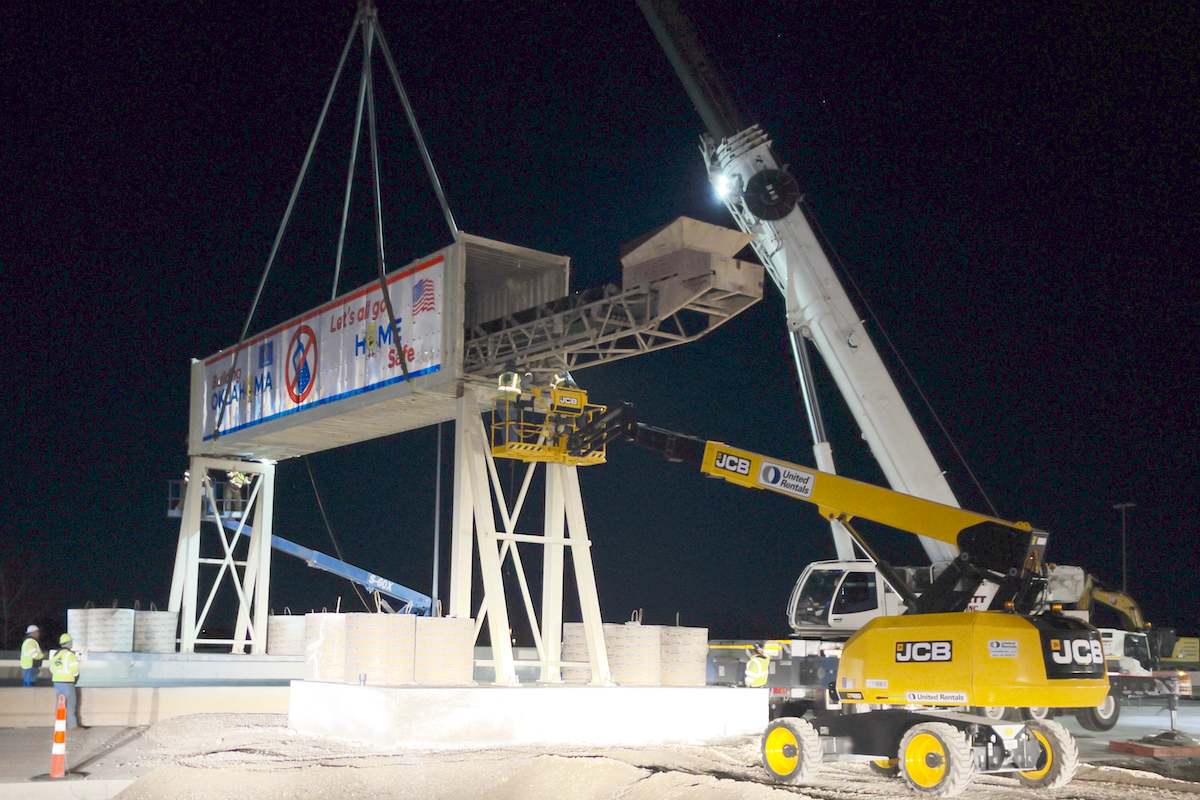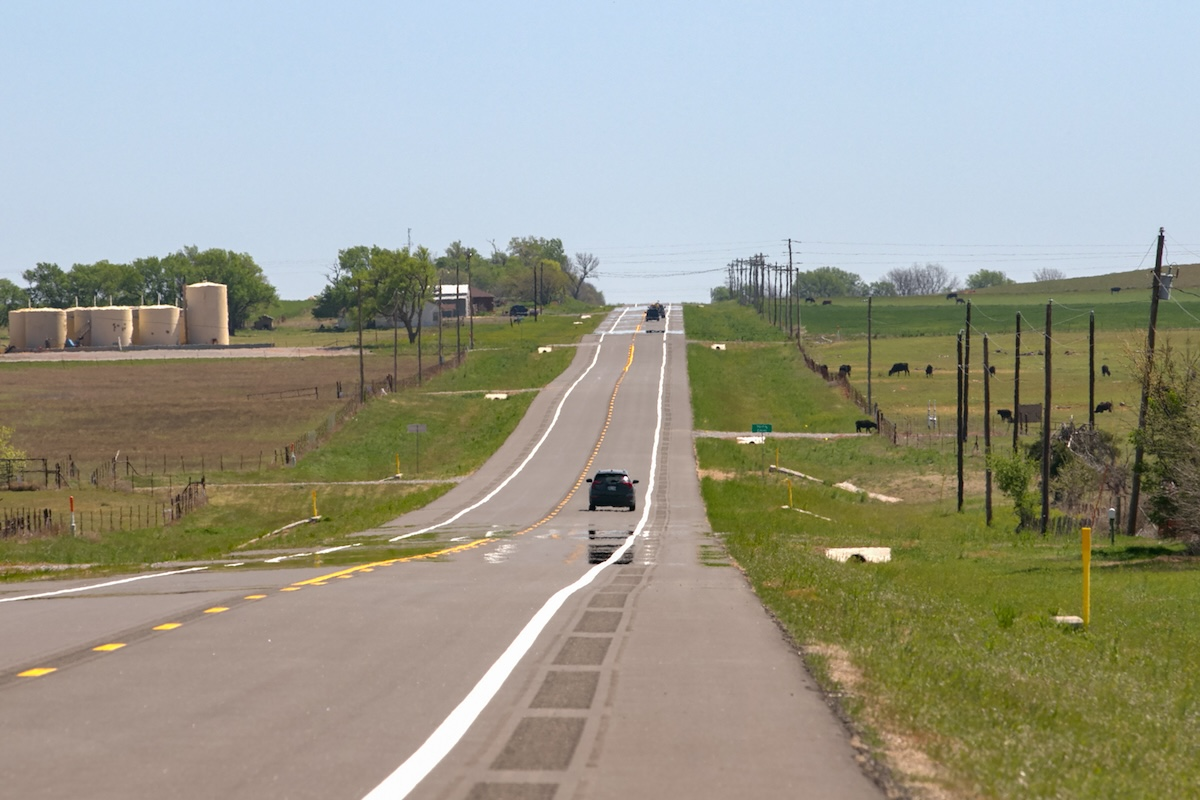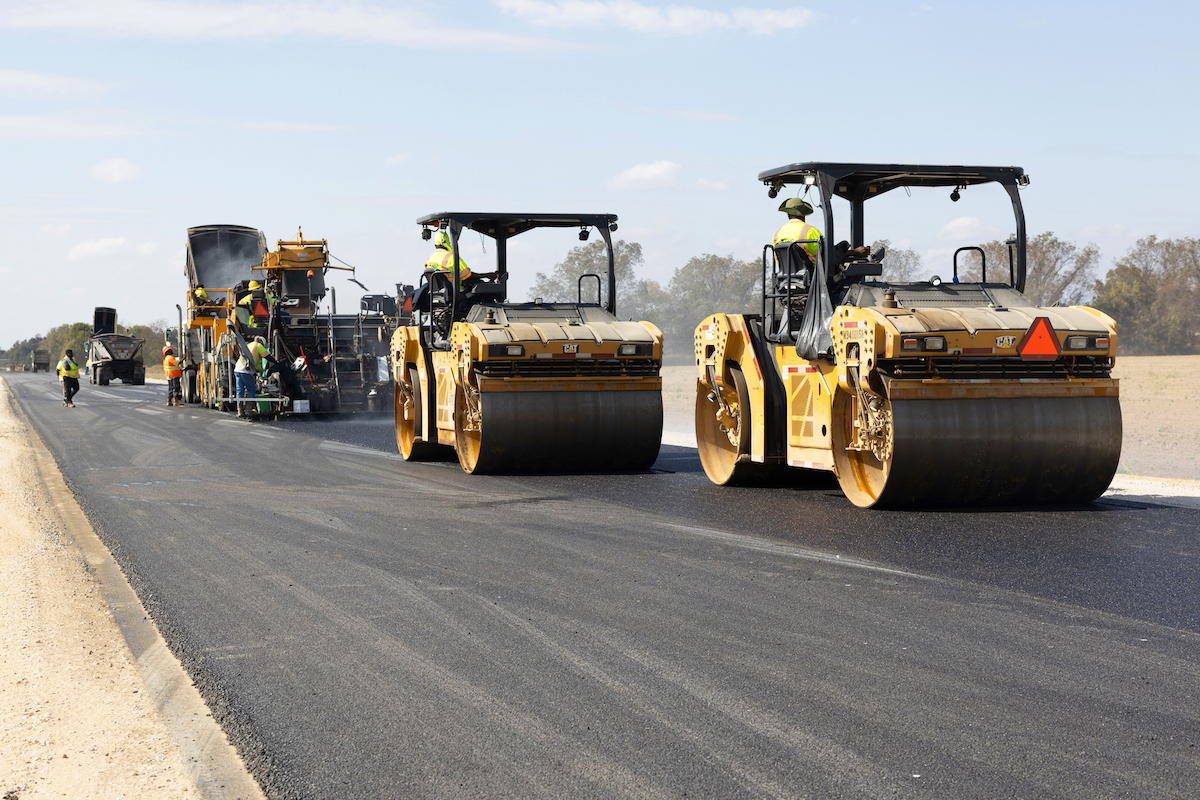Six ceiling-mounted telescoping platform devices in each hangar bay are the primary feature of the two-bay hangar. These devices travel the length of the hangar bay on ceiling mounted traditional crane rails. The carriers that connect to the rails allow the platform to move perpendicular to the main rails. Among the platforms, two platforms serve the wing sections of the plane and four platforms serve the fuselage and rear tail of the aircraft. The platforms rise and lower to any elevation from the hangar floor to a height well above the surface of the aircraft in the hangar bay. The platforms themselves rotate to allow access to all surfaces of the serviced aircraft. The platforms carry connection points for working compressed air, breathing air, water, vacuum, and electrical connections. The platforms have foldable work surfaces, portable eye wash stations, and a paper dispenser to aid painting operations.
Other highlights of the facility include a separate mechanical building, airfield apron connection, restrooms and locker rooms that double as an emergency storm shelter, along with office space, training and administrative rooms, and a courtyard used to store ground service equipment. Utility infrastructure systems including electrical, water, sewer, dust collection, and communications connections are in place for all other supporting facilities. The project was designed and constructed to achieve LEED Silver certification.
The KC-46A Pegasus is a wide-body, multi-role aircraft tanker that can refuel all U.S., allied, and coalition military aircraft compatible with international aerial refueling procedures. Boeing designed the KC-46 to carry passengers, cargo, and patients. The aircraft can detect, avoid, defeat, and survive threats using multiple layers of protection, which will enable it to operate safely in medium-threat environments. Since 2019, the Pegasus has been replacing older refueling aircraft within the Air Force fleet.
















